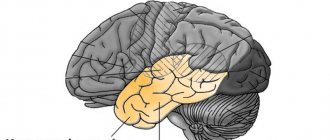marketing business development
30.07.2021
Author: Academy-of-capital.ru
Add a comment
Rating:
| (No votes) |
From this material you will learn:
- The concept of a reference group
- Types of reference groups
- The influence of reference groups on consumers
- An example of identifying a consumer reference group
- Using reference groups in marketing strategy
Understanding what a reference group is will help formulate a marketing campaign more accurately and will allow you to influence the consumer not only directly (by demonstrating the benefits of the product), but also indirectly, through his environment and people who are authoritative for him.
In order to fully use reference groups in a marketing strategy, it is necessary to correctly analyze them for a specific consumer. In our article we will tell you how to use this tool and how strong its influence can be.
What is a reference group?
There are several definitions of this phenomenon. Two definitions are commonly used:
- A reference group is understood as a certain grouping of people capable of somehow influencing the decisions made by an individual. The number of such groups may be more than one, and the individual may not consider himself a member of it. In addition, the reference group can influence other cognitive characteristics of a person.
- Also, a reference group is understood as an association of individuals perceived by another person as a certain ideal that is worth emulating when making decisions.
In our case, both definitions are suitable. Reference groups have an indirect or direct influence on people and in every possible way provoke them to purchase specific goods or use certain services.
At the same time, the phenomenon itself is much broader and affects many aspects of people’s lives. Such groups can influence the way a person thinks, acts, lives, treats other people, etc.
Aggregation of requirements. Collecting a library of knowledge
Aggregation is difficult to divide into successive stages. All the steps that we describe below are often done in parallel. The team collects an array of knowledge about all aspects of the life of a digital system, and then takes it apart. There are 3 main things that we should get after aggregation.
- List of popular targeted actions. To solve what problems do users turn to the components of the digital system?
- User paths in the current system and target paths. How users solve problems and how they should.
- List of recommendations for changing interfaces.
Reference groups in marketing
The group itself may not be a real gathering of people (family, colleagues, interest group, etc.), but a virtual one. The concept of a consumer reference group is gradually blurring. There are too many groups, and most of them exist far from people.
These may simply be rich people whom the individual focuses on. People who own a similar product (you can say hello to those who are still fighting on the Internet about the topic “iOS vs Android”). People who play the same sport or do the same job. There are plenty of examples.
In marketing it works like this:
- The corporation analyzes the target audience.
- She looks at which category she considers herself to be or would like to belong to.
- They build their advertising campaign on the basis of this reference group.
Sometimes companies invite prominent representatives of the association and use their name and image to advertise the product. Sometimes it turns out well and beautifully for everyone, and sometimes it turns out to be an advertisement for Lays chips with Messi.
What does a result outside the reference values mean?
Unlike the norm indicators established by international standards, an indicator that goes beyond the boundaries in one direction or another is not a sentence or even a diagnosis. It's just a certain result. Reference values are obtained on the basis of statistical data, but are not a biological law or a mandatory limit for a healthy person. To correctly navigate inflated or underestimated figures, it is recommended:
- carry out repeated diagnostics in another laboratory;
- exclude possible factors that distort the clinical picture;
- do the analysis again in the same laboratory, after some time, and consider the average of all analyzes as the result obtained.
If diagnostics showed an increased content of a particular element, this may be explained by objective reasons, or errors in the equipment and methods used. A reference value of 0 simply means that the laboratory does not have relevant statistics.
Types of reference groups
Typically, consumer reference groups are divided into three segments with subgroups based on their global characteristics, sometimes adding some more narrowly focused types of associations to the classifications.
By degree of impact
- Primary groups are the smallest and closest communities to a person: family, colleagues, friends. That is, those with whom a person actually interacts on a regular basis, being part of the group directly, and not just imaginary.
- Secondary groups are larger associations, sometimes exclusively ideological. Interaction between its members may occur infrequently or exclusively remotely. Or it may never happen at all.
According to the characteristics of relationships in the group
- Formal are all communities in which human participation is at least somehow documented. For example, belonging to a political party or working in a company.
- Informal - any group where there are no strict rules. Some kind of club of interests without a specific hierarchy and structure, or a group of friends, hobby partners.
According to the degree of self-acceptance in the group and the characteristics of the team
- Positive - associations with which an individual wants to associate himself and from where he draws inspiration. Communities where people live, from whom he takes an example and who are able to influence his choice.
- Negative - communities where individuals live that a person does not like. He would like to avoid interaction with them, as well as any association with this group.
Also, groups such as value groups are sometimes included in the classification - associations based on common views of the world. Informational, where experts usually live, sharing opinions with each other and group members, or utilitarian, i.e. associations, participation in which gives a person some benefits.
Qualitative and quantitative characteristics
A qualitative characteristic is simply indicated by the words positive or negative result shown by the analysis. Quantitative characteristics are used more often, and this is information for the doctor, who, based on the obtained figures, can determine how serious deviations in the patient’s condition there are, if they are compared with what is indicated on the form as reference values. Decoding the data is usually the responsibility of a specialized specialist who knows what changes the numbers indicate. For many diseases, there are certain components of the diagnostic search, which are identified in each person using laboratory tests. If a doctor needs an exact answer in numbers, he receives quantitative characteristics on a standard form.
Don’t be shy, ask our consultants questions, right here on the website. We will definitely answer. Leave commentsGo
Forms of influence on consumers
4 main forms of influence:
- Reward.
- Compulsion.
- Legitimate power.
- The power of self-identification.
We are most interested in the power of reward and self-identity.
In the first case, we are talking about rewards for following the rules and belonging to the group. This can be either an incentive at work for strictly following the rules of the team, or a discount for using the services of a specific company. Referral programs and savings systems work in a similar way. Companies seem to be telling customers and users: “If you play by our rules, we’ll give you bonuses.”
Self-identification is a little more complicated. Here, the brand needs to present its product in such a way that the user considers the use of this product beneficial. No discounts. All kinds of luxury brands work on this principle: owning a certain product makes the consumer “special”, and he happily buys into it.
Coercion and legitimate power operate in the context of political organizations and labor relations.
UI Kit for the Globus network: tasks
Globus is an international retail chain of grocery hypermarkets. Stores are represented in Germany, the Czech Republic and Russia (17 hypermarkets in the Central Federal District).
The company has a conglomerate of resources - a digital system:
- globus.ru - marketing, communication site;
- online.globus.ru - ecommerce platform;
- my.globus.ru - promotional website and personal account of the bonus program;
- rabota.globus.ru - offers for working in a hypermarket chain;
- scanandgo.ru - a site about a new system for self-scanning goods;
- electronic marketplace;
- mobile app;
- own research platform;
- Wi-Fi portal;
- social media.
Different departments are responsible for their work. The result is that the sites are visually different.
globus.ru
online.globus.ru
Globus also places branded information on websites with vacancies and advertisements, and uploads the catalog to Edadil and iGooods. On the territory of the hypermarket there are instore media - cash registers, price checkers, information boards in the hall, TV boards in the checkout area and restaurant, questionnaires on employee tablets. The list could take a long time.
The root problem is that there is no system with a single stylistic image.
According to Elena Walter, head of the marketing department at Globus,
a group of services works in the same structure, solves the same problems, operates with the same brand book, but the output is completely different products, connected only by a few branding elements.
Since digital platforms are supported by different companies, there is no single holder of the stylistic basis. Therefore, when visiting sites, dissonance arises.
Our goal was to create a system and rules for using the brand book for Globus digital channels. That is, create a UI Kit.
Other forms of consumer interaction with reference groups and brands
Value form of influence
Sometimes companies use a not entirely fair game, trying to play on certain feelings of the audience, forming groups of loyal consumers and using a value-based form of influence. A brand can declare that it supports the LGBT community and promote its products among this category of users. The company associates itself with this group of people and attracts their attention because support is important to this association.
You can also put pressure on other problems, for example, with the environment or poaching, by offering products that do not harm nature. Or by offering products for children, supposedly defending family values. In general, people's ideological views are taken under control.
Information form of influence
Sometimes the popularity of a brand is influenced by users. This can be either a large group of people or a small association without big names. For example, if a person wears a particular clothing brand and praises its quality, then those who respect his opinion will also be predisposed to buy items from that brand.
In such groups, either experienced users or people with authority play a key role.
Current state of the Globus digital system
We keep in mind the goal of the project - to develop a unified UI Kit. To do this, you need to work on 10 interfaces.
Initially, we built a small map of the current digital system. It reflected only the Internet platforms of Globus itself: globus.ru, my.globus.ru, rabota.globus.ru, online.globus.ru, social networks, mobile application, and so on. However, that's not all.
It is important to understand in detail how users navigate within the system. A live user journey will help you correctly design navigation across all communication channels.
Therefore, we first identified the top sections and entry pages. Globus’ wishes were added to this database—for example, to separately analyze the “Suppliers” section.
To analyze the pages, we took data for a year.
- Traffic and audience.
Gender, age, number of visits, geography, top visiting hours and a number of other indicators were recorded. In addition to analyzing all traffic, we divided it by source: search engine, transitions from mailing lists, advertising, social networks.
- Transitions between channels.
The most popular transition pages are identified for each channel. That is, to which website within the digital system do users most often move from the current one. There we found the key transition points to globus.ru.
- Popular paths.
A special Google Analytics tool “Behavior Map” tracks the first four steps of a user on each channel. This is how we discovered that the goals of smartphone and PC users are different.
Mobile users of globus.ru are actively interested in the sections “Hurry to buy” and “Other promotions”. PC users do not have a high interest in these sections. This fact was subsequently taken into account when designing the mobile form factor of the site.
The most important indicator is refusal. How quickly visitors leave, at what stage the problem arises. Pages with a high percentage of interruptions, and therefore with the greatest difficulties in logic and content, are highlighted.
- Webvisor, click map.
Based on the list of entry and exit pages to the Globus websites, points of greatest interest and stop factors were collected. They often use “breadcrumbs” in the product card, scroll through banners, and look for hypermarkets on the map. But they leave the “Own Production” section because it does not live up to expectations.
Webvisor
Hit map
- SEO audit, commercial audit.
The classic audit identified technical errors that prevent sites from reaching top positions and slow down visitors.
Based on the collected data, we built some of the main documents of the project. This is a “Map of key touch points with the buyer” - the most popular pages among users, taking into account transitions between channels, pages and interfaces.
As well as “Key entry points to globus.ru” from other digital communication channels.
Stage Artifact
— recommendations for the designer on structuring sections and individual interfaces.
The main conclusion is that the audience for the queries “Globus hypermarket” is looking not just for a display of goods, but for an online store, that is, the opportunity to order delivery. The main components of the sites: catalogue, information on hypermarkets, personal account and loyalty program should work in a single procedure for the user.
Why do reference groups exist?
Marketers are studying this phenomenon to increase sales and better control consumers. It’s much easier to sell a product, service, service, or force someone to perform some action if you can find something in common in the audience of interest and hit it specifically.
For this reason, brands use celebrities in advertising and hire ambassadors, i.e. people who use their popularity to promote a brand. Usually this promotion consists only of public use of the product.
Reference groups always influence our actions, the choice of goods, food, organizations, etc. Therefore, Apple reluctantly shares functions and programs with other operating systems. She knows that if someone in the family uses an iPhone, this someone, for the sake of his own convenience, will convince the whole family to buy iPhones. And then it won’t be possible to jump off, because the family is a very effective reference group. And there are many such examples.
Our desire to associate ourselves with someone and focus on someone always plays into the hands of marketers.
Shaping fashion
One of the most powerful mechanisms of influence on buyers, which is generated by reference groups, is fashion.
Fashion is a value in which the norm of external behavior of others is perceived by the individual as his own need and desire (to have something, to be someone).
Fashion is an extremely sudden phenomenon that quickly forms and quickly fades away. Some artist puts on new sneakers, and they immediately become part of fashion, which means everyone wants them. And when friends, acquaintances and just fellow countrymen around you start wearing these sneakers, you involuntarily begin to look at them.
Brands themselves shape fashion, attacking large reference groups, and thereby attract a more mass audience to their camp.











